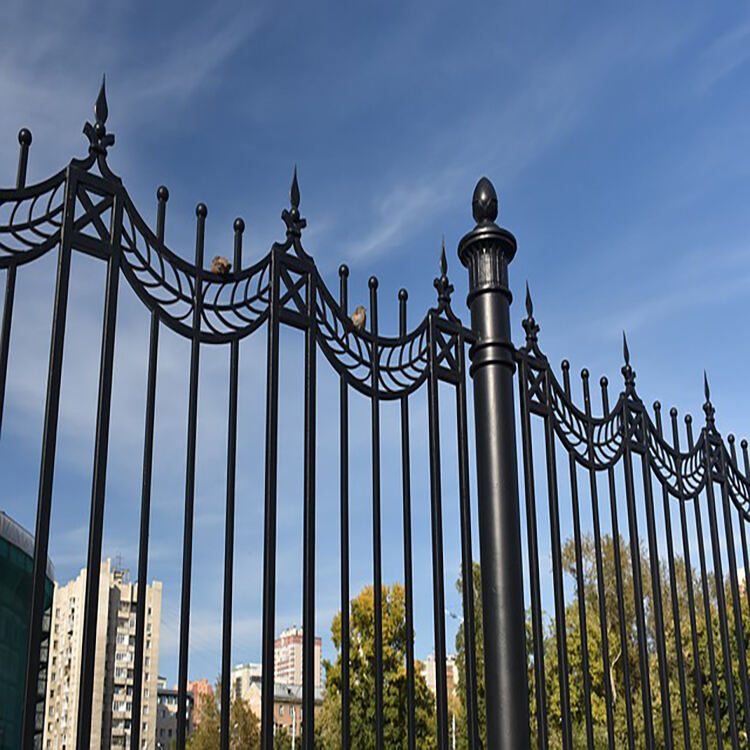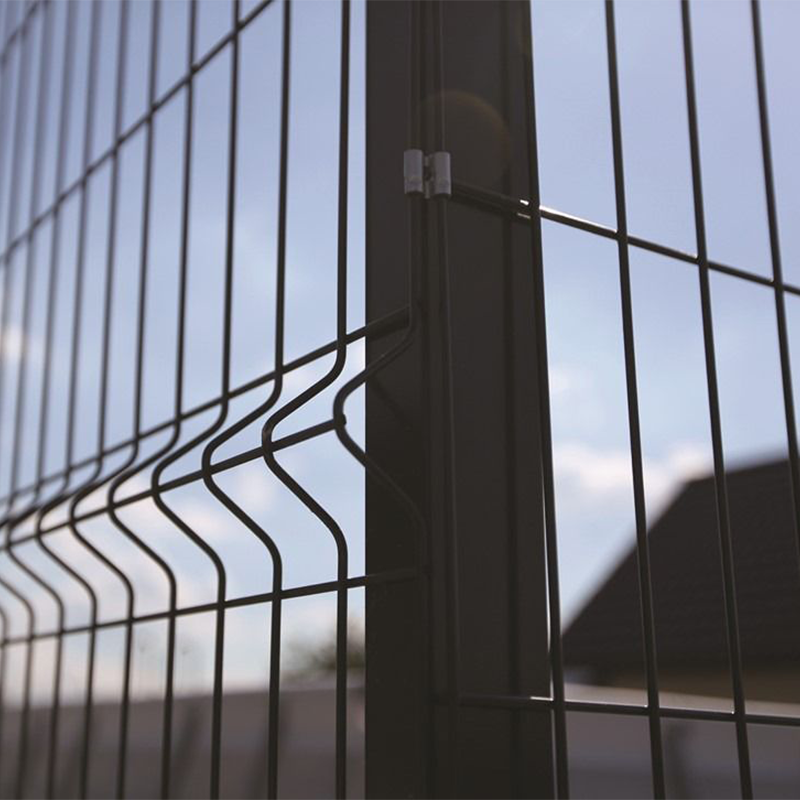Key Benefits of Anti-Climb Fences for Security Enhancement
Deterrence Through Physical and Psychological Barriers
Anti-climb fences are essential for enhancing security, providing formidable physical barriers that deter unauthorized entry. These barriers embody both physical and psychological deterrents that prove effective in safety efforts. The structural design, characterized by tightly spaced wires or vertical bars, physically prevents climb-overs, acting as a potent deterrent against potential trespassers. The psychological aspect arises from the tall and intimidating nature of these fences, which discourages individuals from attempting to breach secured premises. Research published by Security Industry Research supports the effectiveness of these visible security measures. Properties with robust security enhancements, like anti-climb fencing, notably experience fewer security breaches. Such deterrents not only serve as significant barriers but also send a clear message to potential intruders: the premises are not easy targets.
Durability of Metal and Aluminum Fence Materials
The durability of anti-climb fences is another key benefit, largely due to the use of resilient materials like metal and aluminum. These materials are highly resistant to corrosion, ensuring the longevity and sustained effectiveness of the fences. Compared to traditional wooden fences that might rot or deteriorate over time, metal, particularly aluminum, requires minimal maintenance, leading to significant long-term cost savings. A detailed analysis from Fence Installation Reports highlights that aluminum fences, when properly installed, can last over 30 years. This longevity underscores the value of investing in such durable materials, as they are not only effective in preventing climb-overs but also efficient in maintaining their condition, requiring fewer repairs or replacements over the years.
Cost-Effectiveness Compared to Repeated Security Breaches
Investing in anti-climb fences is a cost-effective strategy when compared to the expenses associated with repeated security breaches. These fences can mitigate the frequent financial implications of property damage and theft, thus offering notable economic advantages. Many insurance companies recognize enhanced security features like these fences and often provide lower premiums for properties that have them installed. According to an analysis by the National Security Association, businesses can typically recover their investment in anti-climb fencing within two years due to the accrued savings on security expenditures and decreased insurance premiums. Therefore, not only do these fences serve as a practical security measure, but they also represent a prudent financial investment, offering high returns in terms of safety and cost savings.
Ideal Applications: Who Needs Anti-Climb Fencing?
Government Buildings and High-Risk Facilities
For government buildings and facilities classified as high-risk, heightened security protocols are imperative. Anti-climb fences provide a crucial layer of protection by preventing unauthorized entry, which ensures the safety of sensitive information and personnel. Furthermore, the increased threats to public safety in such environments necessitate robust physical barriers, which can either deter or delay potential attacks. Supporting this, Homeland Security Reports have indicated that the implementation of anti-climb features can reduce security incidents at high-security locations by up to 40%. These measures significantly enhance the security framework of vital facilities and are indispensable in the current security landscape.
Warehouses, Factories, and Industrial Sites
Warehouses, factories, and industrial sites benefit substantially from the installation of anti-climb fences. These robust barriers are vital in protecting valuable inventory and safeguarding workers from theft, vandalism, and accidents. They are especially crucial at industrial sites, which often house hazardous materials, as they help prevent unauthorized access that could lead to catastrophic outcomes. According to research published in the Industrial Security Journal, establishing a fenced perimeter can lower trespassing incidents by a staggering 50%. This statistical evidence underscores the necessity of anti-climb fences in industrial spaces where the economic and human risks of security lapses are significant.
Hospitality Pools and Perimeter Protection
In the hospitality industry, hotels and resorts frequently utilize anti-climb fences to secure pool areas. These fences enhance guest safety by preventing unauthorized access and drownings while also protecting the property's liability. Notably, many designs are aesthetically pleasing, allowing them to integrate seamlessly into landscaping, which is particularly appealing to hospitality businesses. Hospitality Management Studies reveal that properties with well-defined pool perimeters see a significant decrease in unauthorized pool usage incidents. This finding highlights the dual benefit of aesthetics and security, making anti-climb fencing a practical investment for the hospitality sector focused on guest satisfaction and safety.
Design Features That Maximize Anti-Climb Effectiveness
Spiked Toppers vs. Rotating Guard Mechanisms
Spiked toppers and rotating guard mechanisms are two critical components that enhance the security features of anti-climb fencing. Spiked toppers serve as both a visual and physical deterrent, effectively discouraging individuals from attempting to climb. By presenting potential intruders with an immediate obstacle, these spikes make unauthorized access challenging and risky. On the other hand, rotating guard mechanisms offer an innovative approach to security by incorporating continuous movement, which creates an additional barrier against climbing attempts. This dynamic feature prevents intruders from gaining a steady hold or footing, thus further fortifying the fence. According to high-security design case studies, combining spiked toppers with rotating guards can provide unparalleled levels of protection, deterring unauthorized access more effectively than using either feature alone.
Optimal Height and Mesh Density for Intrusion Prevention
Achieving optimal height and mesh density is crucial in maximizing the effectiveness of anti-climb fences. Research indicates that setting the fence height at a minimum of 8 feet significantly deters climbing attempts and enhances security effectiveness. The importance of mesh density cannot be overstated, as it plays a vital role in preventing climbers from obtaining footholds or grip. Fences with dense mesh designs present a formidable barrier, ensuring even skilled climbers face considerable challenges. Industry guidelines often recommend specific height and mesh parameters, not only to boost security but also to comply with local regulations. By adhering to these standards, facilities can ensure a robust defense mechanism against potential intrusions.
Integration with Garden Fence Aesthetics for Discreet Security
Integrating anti-climb fencing with garden aesthetics allows properties to maintain security without sacrificing visual appeal. Tailoring these fences to blend seamlessly into the existing landscape ensures discreet security, enhancing the property's overall value and appearance. This integration provides a dual benefit; it bolsters deterrence while simultaneously boosting perceptions of the property. Market trends reveal a growing demand for fences that expertly combine security with aesthetic design, promoting installations that are both functional and attractive. Such tailored solutions cater to a clientele seeking robust security measures that incorporate elegance and efficiency, reflecting an evolving preference for aesthetically pleasing perimeter protection solutions.
Installation and Maintenance Best Practices
Anchoring Methods to Prevent Undermining
Proper anchoring methods are crucial in preventing any undermining of your fence structure. These techniques can withstand natural challenges such as earthquakes and weather-related shifts, maintaining the fence's structural integrity over time. Utilizing concrete footings paired with advanced anchoring systems enhances the durability and performance of the fence. Experts suggest conducting periodic inspections to assess and confirm anchoring effectiveness, ensuring the installation complies with local building codes and maintains optimal security.
Combining with Temporary Fence Solutions During Construction
Integrating temporary fence solutions during construction provides an initial layer of safety and security. This ensures the safety of the construction site and deters unauthorized access from the start. The dual-layered approach, combining temporary and anti-climb fences, minimizes the risk of theft and unauthorized entry into valuable materials and equipment. It’s advisable for project managers to coordinate with fencing contractors to establish comprehensive security measures.
Long-Term Care for Aluminum and Metal Fence Systems
Regular maintenance of aluminum and metal fence systems is essential for long-term effectiveness. Such care ensures that the fences continue to serve as robust deterrents. Periodic inspections and prompt repairs can prevent issues like rust formation and general wear-and-tear damages. Industry guidelines recommend scheduling maintenance every 1-2 years to sustain optimal security levels and preserve the aesthetic appeal of these fences. By adhering to these maintenance routines, the integrity of the fences and their ability to protect are maximized over time.
Anti-Climb vs. Traditional Fencing: Security Comparison
Why Anti-Climb Outperforms Standard Garden Fences
Anti-climb fences are specifically engineered for security purposes, whereas traditional garden fences prioritize aesthetics, often compromising safety. According to a report by Security Analytics, properties fortified with anti-climb barriers experience fewer security breaches than those with conventional garden fences. These fences are constructed from robust materials that discourage unauthorized climbing, offering a more formidable deterrent than the typically weaker wooden fences used in gardens. This makes them an essential choice for any setting where security is a top priority, including business premises and government facilities.
When to Choose Aluminum Fence Over Decorative Alternatives
Aluminum fences stand out for their durability and low maintenance, which decorative fencing options simply can't match over time. Their robust construction is favored in industrial and high-security environments due to their resilience against environmental challenges and physical breaches. Additionally, experts advise assessing various factors—such as location conditions and the required aesthetic—when selecting a fencing solution. This approach ensures that the chosen fence meets both functional and aesthetic needs while providing superior security, a factor increasingly crucial in modern urban planning.
Upgrading From Chain Link to High-Security Systems
Upgrading from chain link to high-security fencing systems can dramatically enhance site protection. Modern security fences are equipped with features that mitigate common vulnerabilities associated with chain link fences, such as susceptibility to cutting and climbing. Research, such as findings from the Security Performance Report, indicates that businesses see a significant, approximately 60% reduction in security incidents after transitioning to advanced fencing solutions. This upgrade is crucial for businesses seeking to fortify their perimeter protection against evolving security threats, offering peace of mind through superior design and technology.



